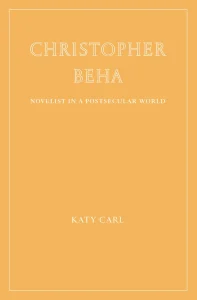
I’ve completed for reading and research for my Civil War novel, tentatively entitled Brookhaven. It’s been something of a relief to see the conclusion of this phase of the project, and I’ll have more to say about the next phase soon.
The Civil War is something of a publishing mini-industry; new books are coming out all the time. I think we keep examining the war, what left up to it, and what came afterward to try to understand our own times. I can say that much of what I thought I knew has undergone some serious revision.
I’m still following news of new articles and books on the conflict, and one was recently published that I couldn’t resist. Decisions of the Vicksburg Campaign: The Eighteen Critical Decisions That Defined the Operation was written by Larry Peterson and published recently by the University of Tennessee Press. And I couldn’t resist it because it was precisely the operation that framed the Civil War experience of my ancestors.

They didn’t live in Vicksburg; they lived south of Jackson near the city of Brookhaven. If you travel on Interstate 55 between New Orleans and St. Louis, which I have many, many times, you travel through Brookhaven.
Vicksburg was the last impediment to Union control of the Mississippi River. New Orleans had fallen in 1862, and Baton Rouge and Memphis not long after. Vicksburg was the blockade point, and it had to be taken. The siege lasted a considerable period, and it involved a number of related operations, including the capture of the state capital at Jackson and what it known as Grierson’s Raid, a cavalry maneuver that started in Tennessee, swept down the state of Mississippi, and end in Baton Rouge. It was designed to confuse and distract the Confederate Army and allow Ulysses Grant to move his troops across the river south of Vicksburg. And it worked rather spectacularly.
Grierson’s Raid is one of the 18 critical decisions of the Vicksburg campaign.
With each decision, Peterson explains what the situation was, what the options were, what was decided, and what were the results or impact. The decisions range from the appointment of the military commanders on both sides, failures of command, Grant’s attempted advance through central Mississippi, Union Admiral David Porter’s decision to run the Vicksburg blockade, Grant’s attack on Jackson, the Confederate mismanagement of Vicksburg’s defense, and more. The discussion for each is short and succinct; the main part of the book is only 100 pages.

The appendices are also well worth reading and constitute another 84 pages, including directions for a driving tour you can take of the entire campaign; he Union and Confederate Orders of Battle; and a short discussion about reinforcing Vicksburg. The book also includes notes, a bibliography, and an index.
What I found especially interesting was that Grierson’s Raid almost didn’t happen. The Union officer takseed with the decision initially postponed it because of Confederate activity and because he thought its success was questionable at best. He was eventually overridden, and the raid was authorized, taking place between April 17 and May 2. One stop made by the Union cavalry was Brookhaven, where the rail station was burned and track torn up.
In my novel, that becomes the event that frames all of what follows.
Peterson retired from United Airlines as a Boeing 757/767 Standards Captain. He’s previously published Confederate Commander: The Remarkable Life of Brigadier General Alfred Jefferson Vaughn Jr and several volumed in the Command Decisions of the American Civil War series.
Decisions of the Vicksburg Campaign covers an extensive amount of information, and it does so in a highly readable, compact way. You get a full sense of the major decisions, good and bad, that figured in the Union’s ultimate capture of the city.
Top photograph: Vicksburg during the Union siege, showing the caves where many citizens lived during the bombardment.















